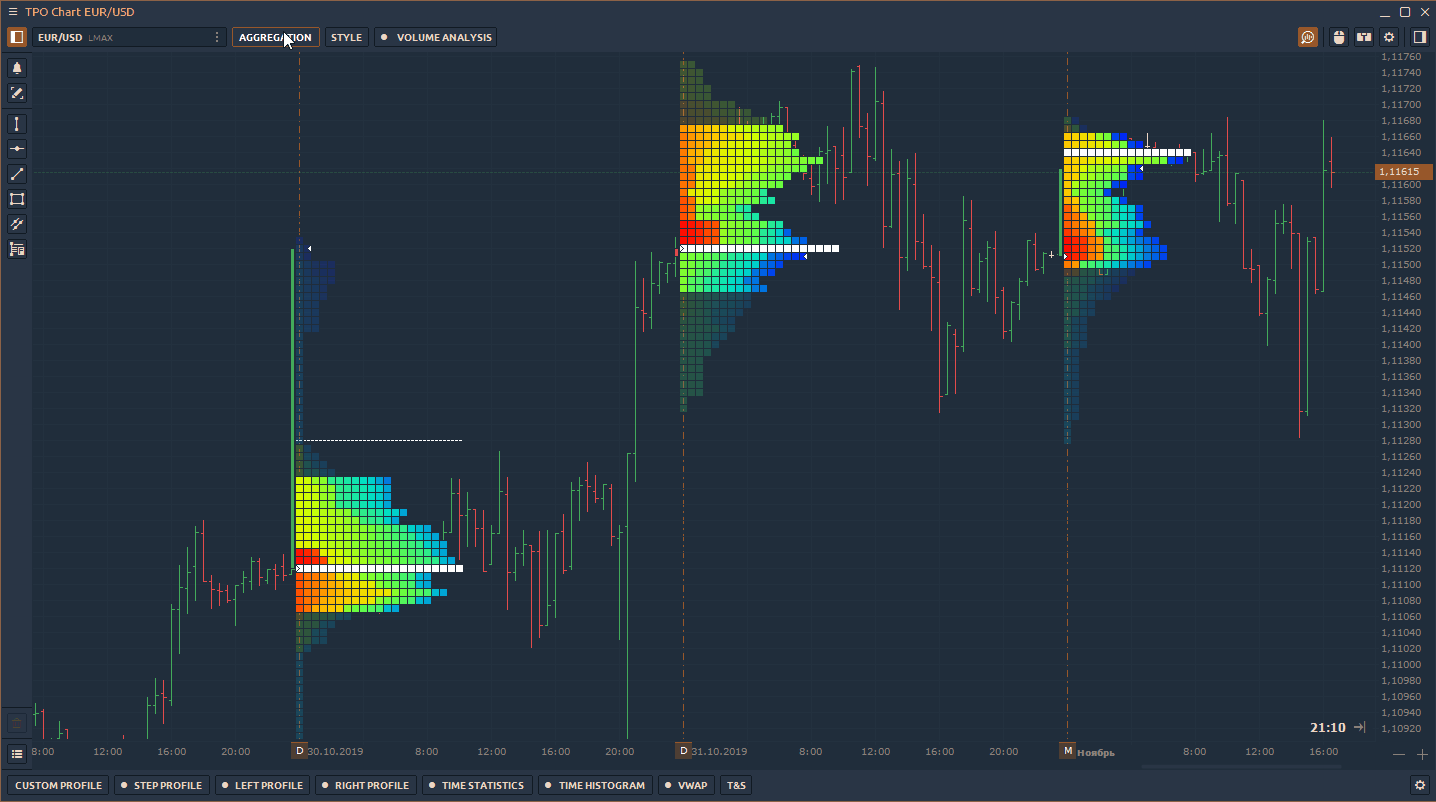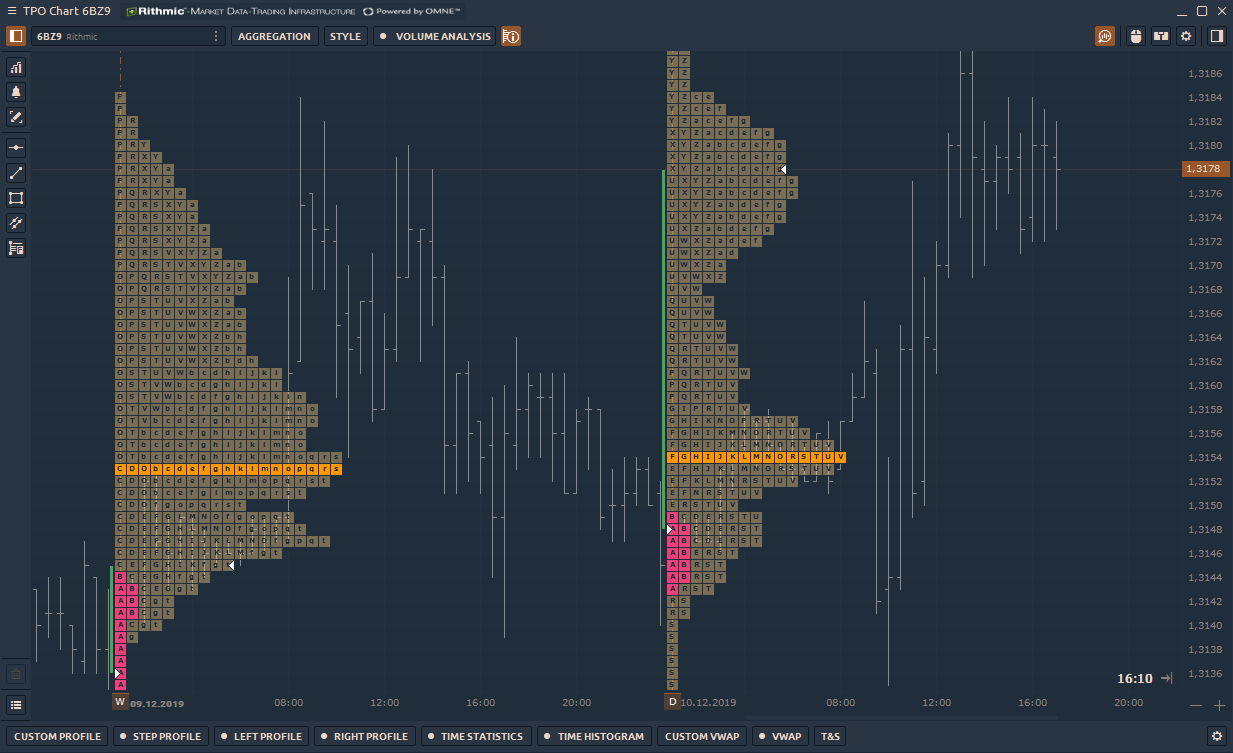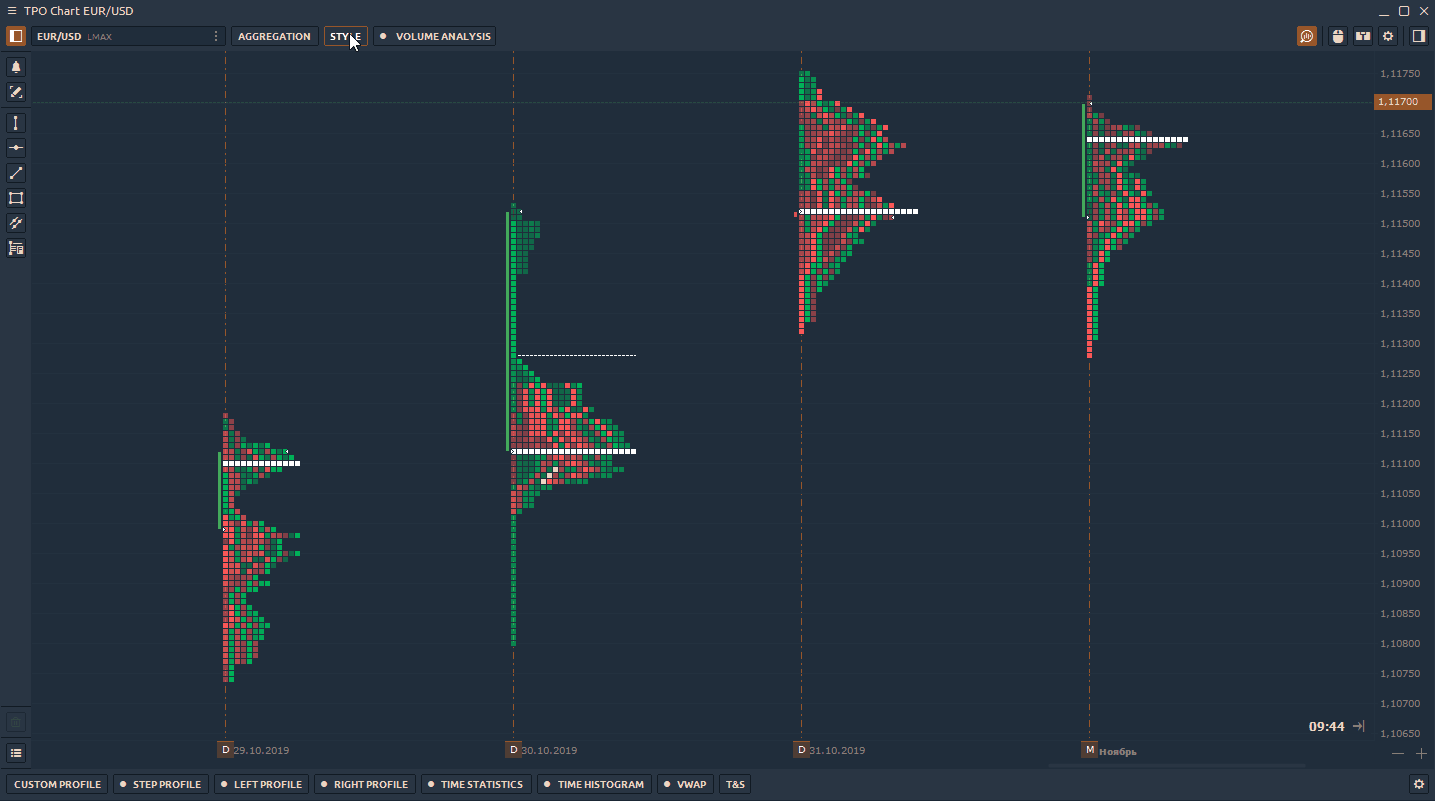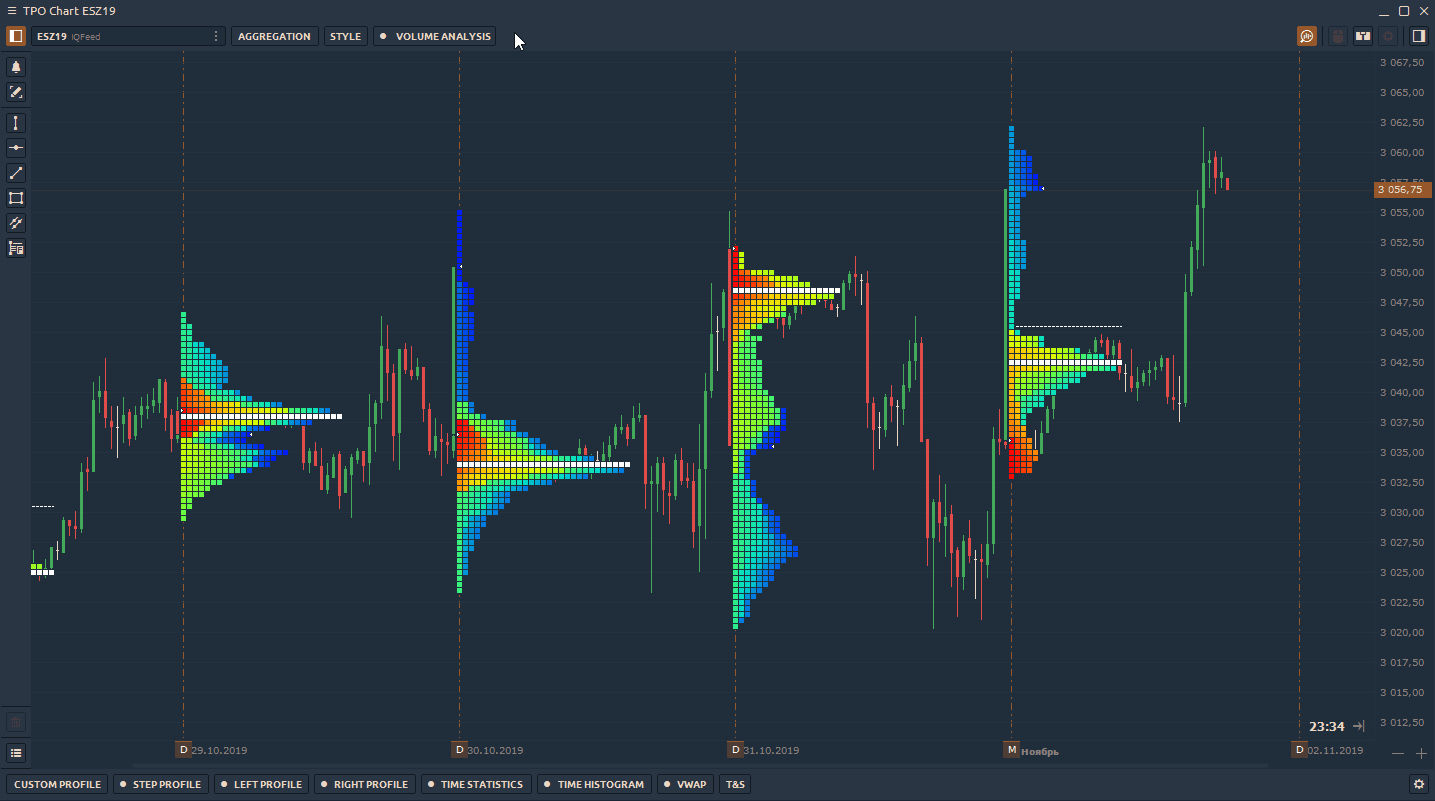
TPO Profile Chart (a.k.a. Market Profile®) | Quantower added a new panel
Time Price Opportunity or TPO Chart, shows the price distribution during the specified time, thus forming a profile. This allows you to understand at which levels or ranges the price has spent the most time, as well as to determine the main support and resistance levels.
Let’s take a look at the most interesting points of the TPO chart panel

Building a TPO Profile for any time period
The base element of the TPO chart is letters that are used to build the market profile structure. Each letter initially represents a half-hour period. Quantower offers to specify in the aggregation settings any values on the basis of which the profile will be built. For example, a daily profile of 30-minute bars is considered as a “standard”. But you can set a lower value of “Build From” and the profile will be more granular. Conversely, set the value higher and the shape of the profile will be smoother.

10 coloring modes for profile visualization
Choose any color scheme for better representation and analysis of the TPO profile. Currently, there are 10 different coloring modes available — Single Color, Up/Down Profile, Up/Down Bars, Heatmap, Delta Profile, Delta Price, Delta Bars, Volume Profile, Volume Price, Volume Bars.

Key elements of TPO Profile — POC, Value Area, Singles
In the profile style settings, enable the main elements for precise analysis:
Point of Control (POC) — price level of the greatest market activity or trading volume. At this level, the price spent most time over the profile range.
Value Area — price range in which approximately 68% — 70% of the market activity or trading volume took place.
Singles or single prints of the profile are placed in the middle of a profile structure, not at the upper or lower edge. They occur on impulse movements and are used as support/resistance zones, which the price can test in the near future. The singles line indicates where the singles begin to form (in cases when there are several single prints).

TPO Profile Initial Balance
Opening Range or Initial Balance is a price range, which is formed during the first hour of the main session (RTH session). The opening range can be used as support and resistance zones. In the additional settings, you can set any period for Initial balance.


Also, the view for Initial Balance can be as Bar or Area. By default, it set in the form of Area (filled letters).

TPO Custom colors for different data types
Added more customization for the TPO chart. Change default coloring schemes for TPO profiles depends on the selected data type.

Overlaying the standard chart over the TPO Profile
In the Style settings of TPO Profile enable the “Plot Symbol” option for displaying the standard chart and apply any drawings for technical analysis.

Statistical table for TPO Chart
This table provides basic information for each TPO Profile:
- TPO numbers
- Prices of POC, Value Area High / Low
- Rotation Factor
- Total Volume for each profile
- Delta and number of Trades
Enable it via advanced settings of TPO Chart panel in the General category or via Button on the toolbar (near Volume Analysis).

Splitting & Merging the TPO Chart
Use splitting for a detailed analysis of profile formation. There are two splitting modes available in the platform:
- Split full profile, that separates the profile into each bar or TPO;
- Divide by bar, that splits the profile in half on the selected bar.
To separate TPO, select the necessary profile and click on the Split button (or use right-click to open the context menu)


Merge is a feature that combines several profiles into one. Right-click on the selected profile to open the context menu and select Merge Left or Merge Right. To return profiles to their original positions, press the Reset button.

Using Volume Analysis tools
TPO profiles are used on their own to find areas of support and resistance, and can also be used in conjunction with volume profiles. For this, we have added Volume Analysis control to the top toolbar of the panel. Here you can select the data type and show/hide the POC & Value Area.

In addition, we have left our standard volume analysis tools, which let you add Time Statistics & Histogram for bar analysis, VWAP, and other tools.
Setting the Session Time
Set the custom time range for the necessary trading session and the profile will be built within this range. The rest of the time the profile will not take into account

TPO Profile chart panel is available as a separate license as well as for all users with the All-in-One license.
